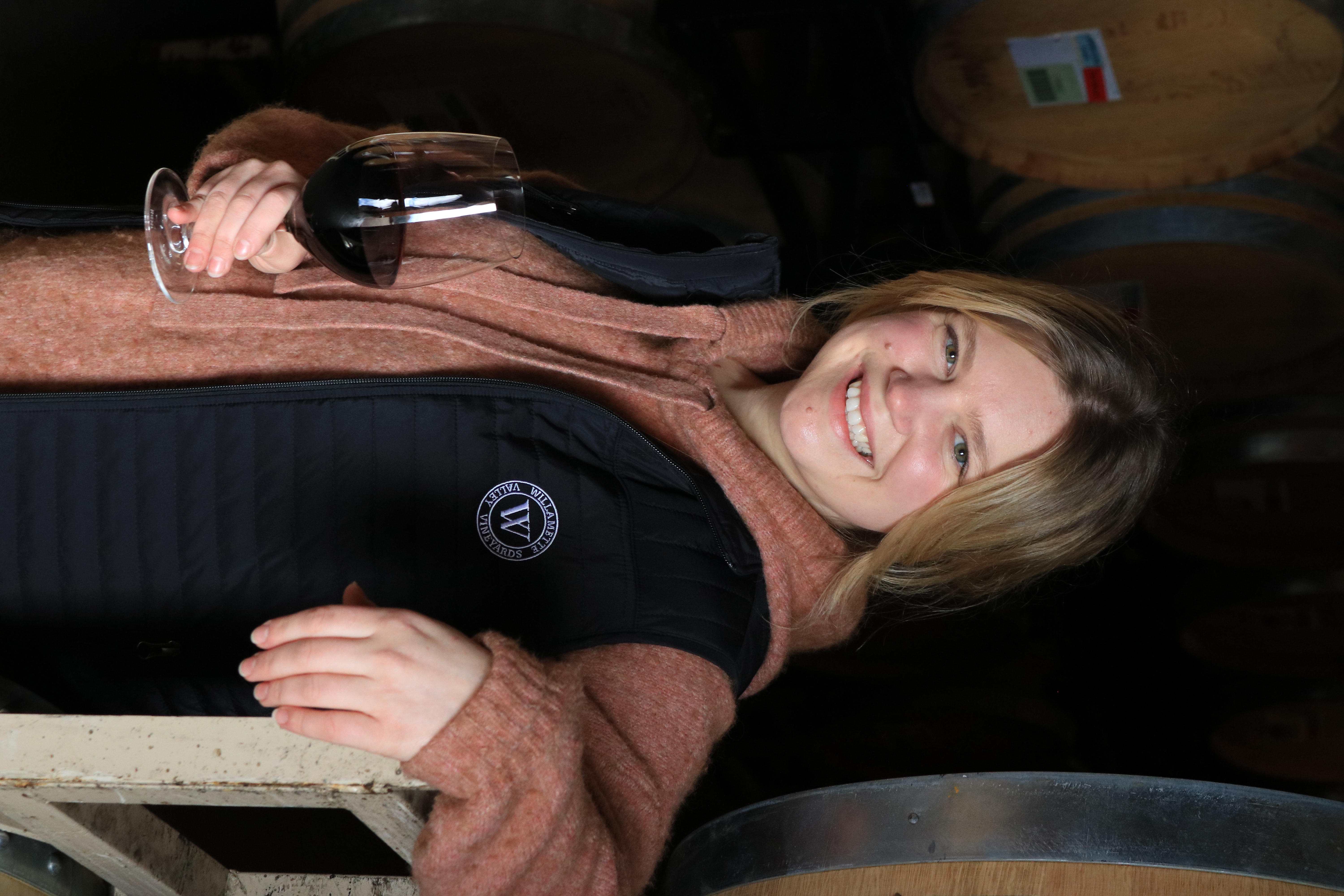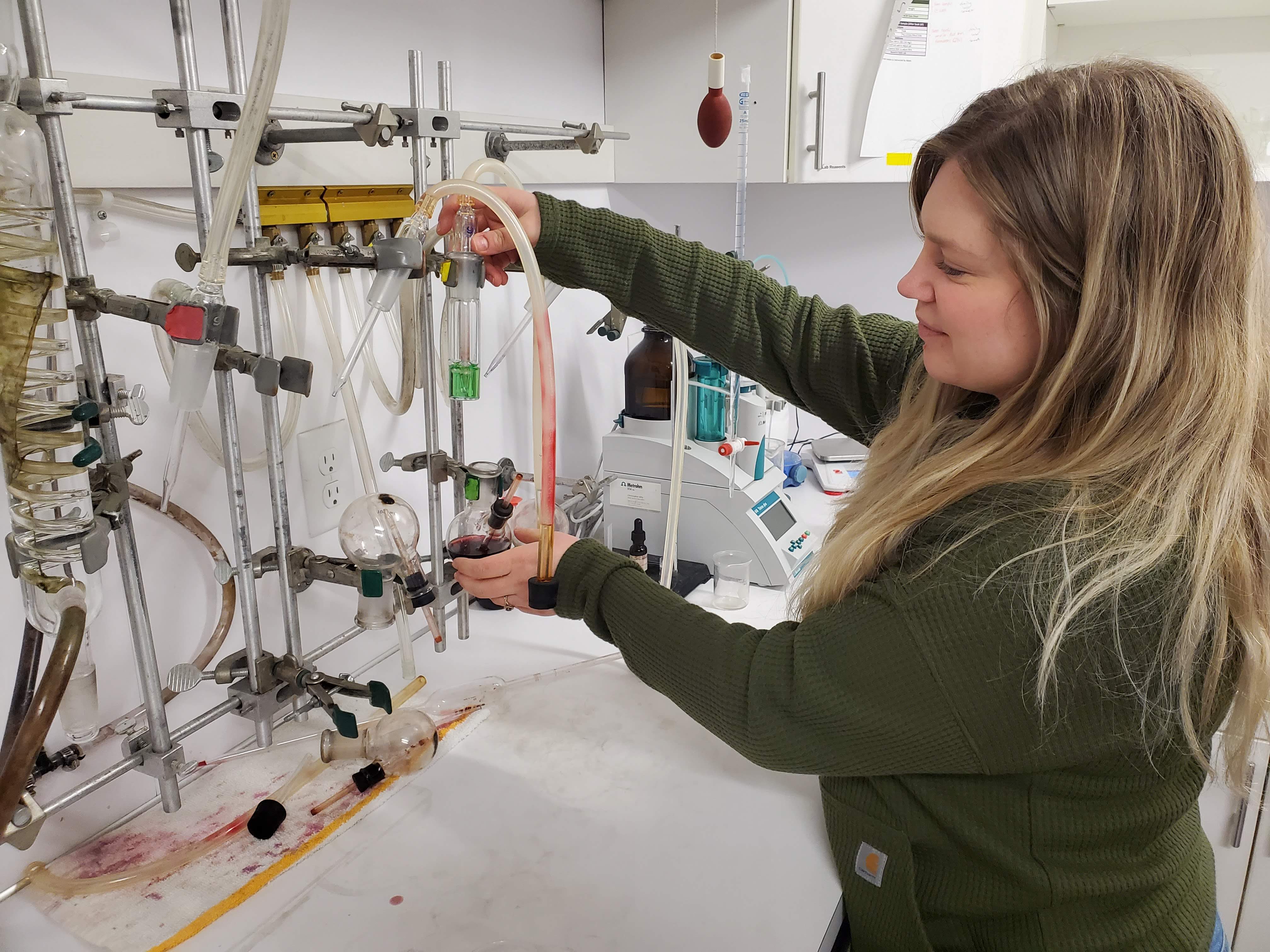At Work in the Winter
Winter in the vineyard doesn’t mean our crews take a break until spring — and the vines don’t either.
It may look like little is happening during the dormancy phase, but beneath the surface, the vines have been working hard to tolerate and acclimate to the cold days of winter.
After harvest, the vines’ roots begin to grow, soaking up nutrients from the soil.
And although cold temperatures can harm crops, grape vines are extremely resilient. Water and nutrients in the vines move into the trunk and roots when temperatures drop. Storing these carbohydrates helps prevent the freezing of the plant tissue and gives the vines the energy they need for bud break come spring.
While the vines do a lot of self-maintenance, pruning is an important part of the grape-growing process that helps prepare the vines for future fruit development.
During the colder months, our vineyard stewards are hard at work pruning and maintaining the dormant vines. This week, they finished pruning vines at our Estate in the Salem Hills and are anticipating bud break.
Pruning and Preparations
Vineyard Manager Efren Loeza started working at Tualatin Estate Vineyard as a teenager and eventually joined Willamette’s team when it merged with Tualatin Estate in 1997.
Efren learned about vineyard management and specifically pruning from pioneering viticulturist David Foster. He brought that knowledge to our multiple vineyards spanning more than 500 acres.
Pruning is a crucial component of vine management as the decisions our vineyard stewards make when pruning will impact the next year’s growth.
At Willamette, we utilize different styles of trellises to maximize quality grape growth. This paired with intentional pruning and maintenance decisions gives us plentiful harvests.
Watch the video below featuring Efren and Founder & CEO Jim Bernau to learn more about vine maintenance.
Women in Wine: Meet Alexis, Willamette’s Enologist
Winemaking is a science and an art. That unusual combination led Willamette’s Enologist Alexis Doyle Langer to pursue a career in winemaking.
“What is fascinating about winemaking is that you let the analysis guide you, but you still rely on sensory input to make decisions,” Alexis said. “I can make a wine analytically perfect, but if the consumers don’t like it, it doesn’t matter. It’s a science and an art at the same time.”
Alexis is one of Willamette’s many women working in wine. March 25th, National Women in Wine Day, is a time to acknowledge Alexis and all of the incredible women who make up our winery’s busy staff.
Learning the ropes
Alexis dreamed of being a distiller in Scotland. She attended Oregon State University to study food science and, through that program, ended up working in the wine lab. At that point, she fell in love with the art and science of winemaking.
 Alexis Doyle Langer, Willamette's Enologist
Alexis Doyle Langer, Willamette's EnologistWhile in school, she worked at Bluebird Hill Cellar in Monroe and helped with everything from vineyard management to cellar work to the tasting room.
“It was a good opportunity to see all sides of the winemaking process,” Alexis said.
Following graduation, she worked a harvest in California and returned to Oregon, where she took a job as a lab technician at Willamette.
Alexis quickly moved up in the company and became lab manager and later our enologist.
“I was tenacious and saw where there were needs and filled them,” she said. “I really grew into the position.”
A year into her work as our enologist, Alexis is excited about what each day brings.
“Winemaking is tough work,” she said. “But I still wake up excited to do my job. I’m very passionate about wine, educating others and furthering my understanding. I like that there are new challenges every day.”
 Alexis started at Willamette as a lab technician and quickly worked her way through the ranks.
Alexis started at Willamette as a lab technician and quickly worked her way through the ranks.Supporting each other
Alexis said she was fortunate enough to have many women who helped her achieve her goals.
It started with her mom. Alexis said her mom encouraged her to be hardworking, driven and passionate and taught her that success meant trying your best. These qualities helped her quickly climb the ranks at Willamette.
Through Oregon nonprofit Women in Wine, Alexis met Emily Terrell, Associate Winemaker at Brittan Vineyards. Emily became a mentor to her. Having a fellow woman winemaker show her the ropes inspired Alexis and helped her gain a better understanding of the wine industry.
Now, it’s her turn to be a mentor to others.
“I’m in a position where I get to help foster those relationships, open doors for women and guide them in the wine industry,” she said.
Lifting other women up is something Alexis believes is an essential part of being a woman in wine. She said encouraging and supporting other women, especially helping them overcome self-doubt, is crucial.
“Building that diversity and understanding where people are coming from will advance winemaking for future generations,” she said.
About Willamette’s Women in Wine
At Willamette Valley Vineyards, we celebrate and support women in the wine industry to inspire change. Roughly 58.2% of our staff and 56% of our leadership team are composed of passionate women dedicated to shaping the Oregon wine industry. Willamette's female staff is also some of its most tenured; 44% of our employees with 5 or more years at the company are women.
This year, celebrate National Women in Wine Day by enjoying a limited collection curated by some of our female leaders, including Alexis.
 Willamette's Women in Wine
Willamette's Women in WineCraft Your Own Wine with a Blending Experience at Willamette Valley Vineyards
Try your hands at crafting your perfect wine during a red blending experience at Willamette Valley Vineyards.
Blending experiences are available at the Estate in the Salem Hills, Willamette Wineworks in Folsom, California, and our Vancouver Tasting Room & Restaurant. These venues offer guests a unique opportunity to learn about wine and take control of the winemaking process.
“It breaks it down to a personal experience,” Vancouver Winery Ambassador Julian LaRocca said. “People get to feel a connection to what they’re doing.”
The prototype for the blending system was created and installed at Willamette Wineworks and later modified for the other locations by David Markel, Willamette Valley Vineyards Research and Development Manager.
Each location is slightly different, with regional varietals available for blending a unique cuvée. At the Estate in the Salem Hills, wine enthusiasts can learn about and taste seven different Pinot Noir clones. At Willamette Wineworks, guests blend Natoma wines made in California.

In Vancouver, guests blend 5 Walla Walla AVA wines.
The blending system in Vancouver is the newest of the three, debuting in 2023. This location features five varietals grown on the Oregon side of the Walla Walla AVA. Guests can create their blend using Merlot, Cabernet Franc, Malbec, Syrah and Cabernet Sauvignon.
“The Blending System elevates the Tasting Room to be more of a complete experience,” Julian said. “It brings you closer to the wine and makes this more than just a restaurant.”
The Experience
A Winery Ambassador leads participants in learning about each varietal, sharing stories about the different grapes and where they grow.

At the Estate in the Salem Hills, guests can create their perfect blend using seven different Pinot Noir clones.
Attendees taste each wine, noting what flavors and aromas they experience. Next, guests create their ideal blend using the dials on the blending system to determine how much of each varietal they want in their wine.
Julian said there are no rules, but he suggests not trying to blend an equal amount of each varietal. He added that the group activity can be fun, competitive and memorable.
“A huge part of wine is the group aspect,” Julian said. “It’s about community.”
Winery Ambassadors take note of each participant’s blend so they can purchase a carafe or glass of their blend any time they visit the Vancouver location.
Guests who try out the blending experience at the Estate can purchase a carafe of their blend and take home a bottle of their creation. At Willamette Wineworks, participants can purchase a glass or growler of their favorite blend.
Celebrate Washington Wine Month with a Blending
Those looking to pair their blending experience with a special evening can reserve a spot at our Washington Wine Month Celebration and Métis release party in Vancouver on Sunday, March 24th, at 5 pm.

Before crafting your blend, you’ll taste our newly released 2021 Métis Red Blend. Tickets are $55 per person or $50 for Wine Club Members and $45 for Owners.
Julian said his favorite part is watching attendees take ownership of their wine.
“It’s special seeing people share their blend with friends,” he said. “The people that made the wine get to explain it as they share it.”